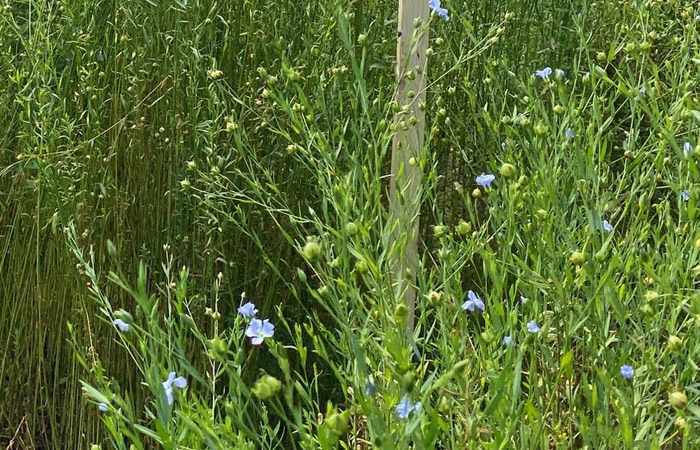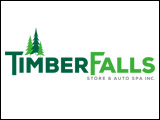Some of my earliest memories are of a sea of blue flowers swaying in the breeze as I rode my bicycle along the gravel road that bordered my father’s flax field. From the seat of my bike, and in my imagination, it appeared as if I was standing on the shore of a lake, looking out over the water. Growing up on a grain farm in the Manitoba prairies gave me hours of endless adventures as I wandered the interweaving roads that characterize the southern Manitoba landscape. The scope of our family farming operation was vast and rarely did I travel alone beyond its borders.
My dad, like many other grain farmers in Manitoba, grew flax for oilseed. It grew to an average height of 24 inches and the seed wasn’t harvested until the plant was completely brown. The waste was baled and used as feed or bedding for livestock. That was then.
These days, flax has taken on a whole new purpose for us on our farm. As an alpaca producer, the importance of using natural fibres in the production of goods we make ourselves has always been our goal. So, when the Pembina Fibreshed introduced the idea of plant based, flax fibres it seemed like the perfect fit. Linen yarn is soft, lustrous, and strong, and like alpaca, it’s naturally hypoallergenic. The main difference is that it’s plant based and would require an entirely different approach to processing.
This past year was our second season of growing flax for linen. Armed with both knowledge and hindsight, we began the growing season optimistic about what might come. We increased the size of our planting area and experimented with four different flax varieties to see what grew best. Approximately one hundred days from planting, we harvested, dew retted and dried the flax, making it ready for processing. We were pleased to find that two of the four varieties grew tall and straight with minimal branching at the base of the plant. In some areas, lodging was observed which may have been due to some heavy rain and random denser plantings.
Plans for flax processing coincided with several events where we performed demonstrations using traditional handmade tools. These events also gave us the opportunity to educate, engage and hopefully inspire our community around the idea of local textile agriculture and the learning of new skills. Despite a few missteps along the way, the season was a success. We learned more about the process and continue to improve our tools and techniques to optimize that success.
As the son of a grain farmer, I grew up not knowing the full potential of the flax plant. With over 300,000 hectares of flax grown annually in Canada, my father’s focus was on farming what he could sell. We grew flax for consumption, not clothing and it has been that way for over a century in this country. Outside of wool, textile agriculture was greatly under-valued and fast fashion has damaged the industry by encouraging the frequent purchasing and discarding of clothes. Like alpaca, however, linen can transcend this thanks to its durability.
Now, as a producer of natural, protein fibre and maker of textile goods, flax fibre has a strong appeal to us. With an abundance of knowledge available online and through great local sources like the Pembina Fibreshed, flax can also be easily grown at home and processed with simple tools.
We also believe many people are looking for greener and more sustainably produced home goods and clothing, so why not linen?
Our experience with flax has taught us a few things. First, the humble flax plant can be finicky to work with and so the timing of each stage is important to master. Processing is also time-consuming and requires some physical effort. Secondly, working with plants is much easier than animals. They don’t kick, spit, or leave behind piles of poop for you to clean up, but they also don’t communicate with you in those special ways that attracted you to them in the first place. Lastly, this project has taught us to be patient with the process. In Canada, we only have one growing season, and one opportunity to get it right. Even though learning from our mistakes is often immediate, correcting them takes time.
Overall, it has been a challenging (and fun) experience. We’ve made great friends in the fibreshed community and enjoy every opportunity to gather together to learn. The 2024 planting season is nearly upon us, and we are excited to see where this season’s combination of experience, weather, new skills, and luck will take us. Will you join us?




